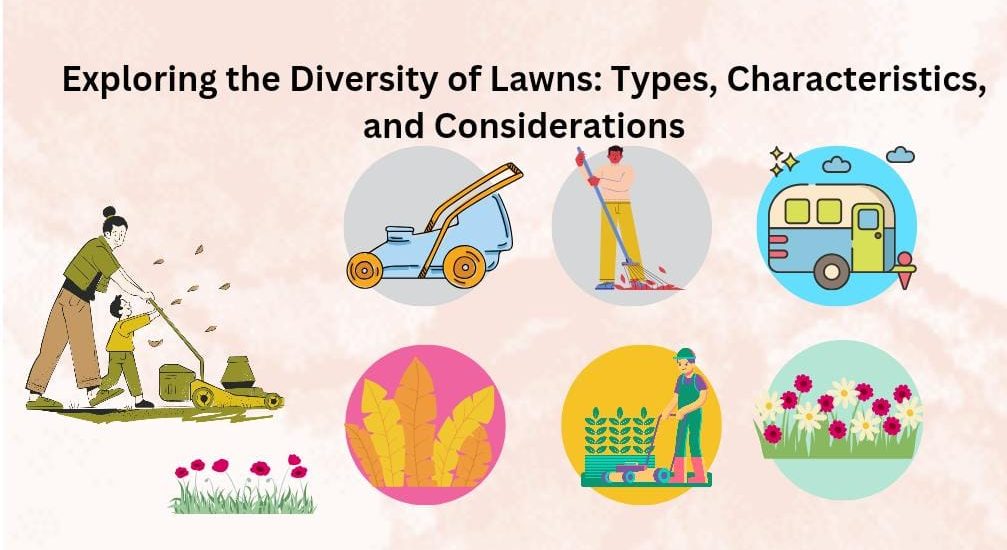Lawns are more than just patches of grass; they are dynamic landscapes that reflect personal preferences, environmental considerations, and regional climates. Understanding the various types of lawns available allows homeowners to make informed decisions that align with their aesthetic desires, maintenance capabilities, and sustainability goals. From traditional turfgrass lawns to eco-friendly alternatives, each type offers unique characteristics and benefits.
Traditional Turfgrass Lawns
Traditional turfgrass lawns, such as Kentucky bluegrass, Bermuda grass, and fescue, are widely popular for their lush green appearance and durability. These lawns require regular mowing, fertilization, and watering to maintain their aesthetic appeal. There are ride-on lawnmowers available like a zero turn lawn mower which can help with larger areas. While they offer a classic look and can withstand heavy foot traffic, they also demand significant maintenance input and may contribute to water and chemical runoff.
Drought-Tolerant Lawns
In regions with water scarcity or drought conditions, drought-tolerant lawn alternatives provide a sustainable landscaping solution. Species like buffalo grass, zoysia grass, and native grasses require minimal watering and maintenance once they’re established. These lawns not only conserve water but also reduce the need for fertilizers and pesticides, promoting environmental stewardship and cost savings.
Low-Maintenance Lawns
For homeowners seeking to reduce lawn care efforts and expenses, low-maintenance lawn options offer a practical solution. Ground cover plants such as clover, creeping thyme, and moss require less mowing, fertilization, and irrigation than traditional turfgrass lawns. Additionally, they provide a habitat for pollinators, enhance soil health, and create visual interest with their diverse textures and colors.
Eco-Friendly Lawns
Eco-friendly lawn alternatives prioritize environmental sustainability by incorporating native plants, reducing chemical inputs, and supporting biodiversity. Native wildflower meadows, prairie grasses, and xeriscapes are examples of eco-friendly lawn options that promote habitat restoration, conserve water, and enhance ecosystem resilience. These landscapes attract beneficial insects, birds, and wildlife while requiring minimal maintenance and resources.
Ornamental Lawns
Ornamental lawns feature a blend of grasses, flowers, shrubs, and ornamental grasses to create visually appealing landscapes. Designs may include formal gardens with manicured lawns, English cottage gardens with mixed borders, or modern landscapes with ornamental grasses and perennials. Ornamental lawns offer endless possibilities for creativity and expression, allowing homeowners to customize their outdoor spaces according to their personal style and preferences.
Synthetic Lawns
Synthetic or artificial turf offers a low-maintenance alternative to natural grass lawns, particularly in areas with challenging growing conditions or heavy use. Made from synthetic fibers that mimic the look and feel of real grass, synthetic lawns require minimal watering, mowing, and fertilization. While they offer convenience and durability, synthetic lawns may lack the ecological benefits of natural grass, such as carbon sequestration and habitat support.
Functional Lawns
Functional lawns serve specific purposes beyond aesthetics, such as sports fields, playgrounds, and recreational areas. These lawns are designed to withstand intensive use and provide safe and durable surfaces for activities like soccer, baseball, and picnicking. Functional lawns require specialized maintenance practices, including aeration, overseeding, and turf reinforcement, to ensure optimal performance and longevity.
In conclusion, the diversity of lawns encompasses a wide range of options tailored to individual preferences, environmental considerations, and practical needs. Whether choosing a traditional turfgrass lawn, drought-tolerant alternative, or eco-friendly landscape, homeowners have the opportunity to create outdoor spaces that are beautiful, functional, and sustainable.
By understanding the characteristics and benefits of different lawn types, homeowners can make informed decisions that enhance the beauty and resilience of their landscapes while minimizing the environmental impact.

